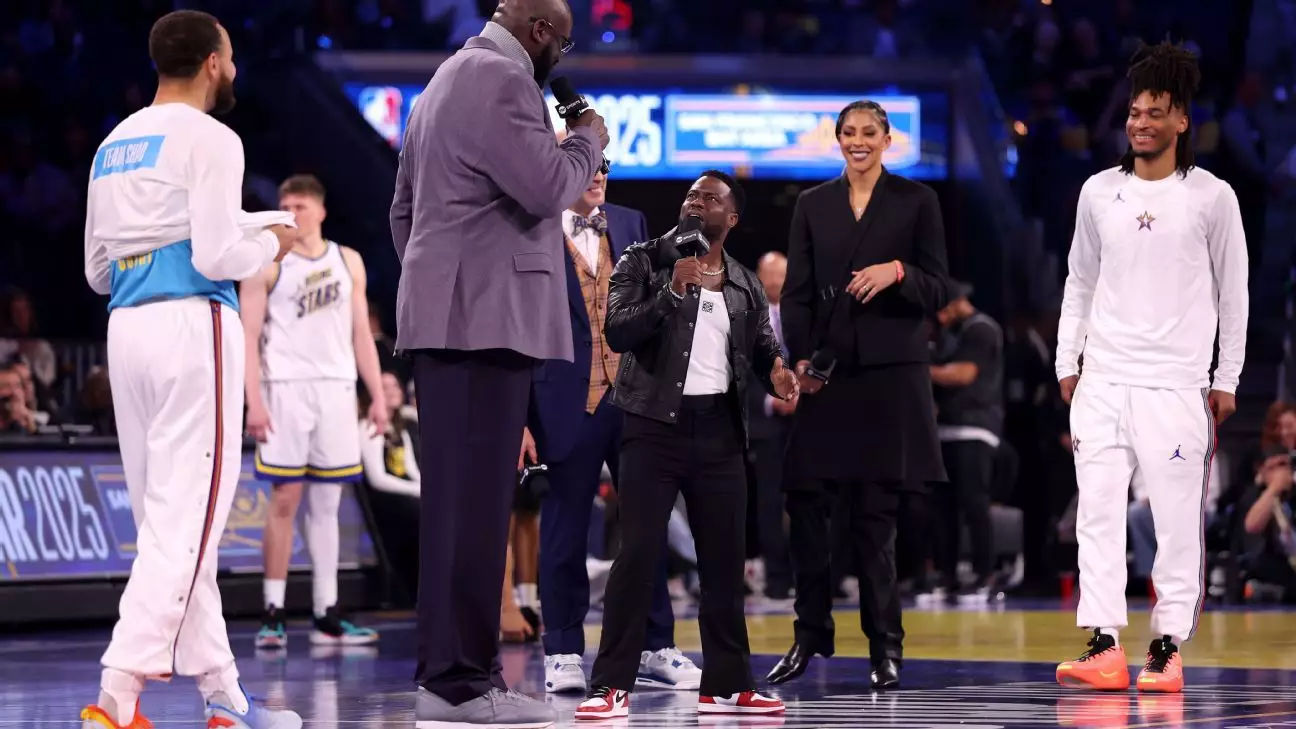The NBA All-Star Game has long been a highlight of the league’s season, offering fans a chance to see their favorite players showcase their skills in a celebratory atmosphere. This year’s game introduced a novel tournament format that shifted away from the traditional East vs. West matchup, opting for a four-team, single-elimination setup. While this change aimed to inject fresh energy into the event, the results were met with a mix of enthusiasm and criticism from the players involved.
The reimagined All-Star Game structure featured teams assembled by TNT analysts, namely Charles Barkley, Kenny Smith, and Shaquille O’Neal, along with a fourth team made up of winners from the Rising Stars event. With a target score of 40 points set for each round and a spotlight on team dynamics, the design aimed to create a unique competitive edge. However, the excitement on the court was overshadowed by frequent interruptions designed to entertain the crowd rather than maintain the game’s flow.
Prominent players such as Trae Young voiced their concerns regarding the number of stoppages throughout the tournament. Young articulated that the numerous breaks felt excessive, suggesting that they were imposed primarily for broadcasting purposes rather than the players’ enjoyment. This sentiment was echoed by teammate Shai Gilgeous-Alexander, who acknowledged that, while competitive moments occasionally shone through, the disruptions hindered the overall experience.
One of the key moments of disruption occurred during the championship game, where the players found themselves on pause for almost 20 minutes as a tribute unfolded for the TNT crew, marking their final year covering the All-Star Weekend. While honoring the broadcast team was a commendable gesture, the timing and execution raised eyebrows among players who appreciated the need for momentum on the court.
Gilgeous-Alexander pointed out that the natural flow of competition needs to be preserved for an event that’s intended to showcase athletic skill. Players want to channel their energy into the game itself rather than being sidelined for off-court entertainment. In a similar tone, Jaylen Brown remarked on how halting play could detract from physicality, which is often a hallmark of All-Star games. The game’s spirit is about showcasing talent; however, excessive breaks may turn the event into more of a spectacle than a competitive contest.
Various stars used the opportunity to express both their enjoyment of the event and their critiques of its execution. Stephen Curry, who was named MVP, acknowledged the need for innovation, stating that the league needed “new life” and engagement to draw in fans. Despite his accolades, he recognized the uneven transitions between entertainment and gameplay. On the other hand, Draymond Green raised the issue of including first- and second-year players, questioning the merit of such inclusions when compared to the struggles faced by seasoned players to establish themselves in the league.
The absence of major superstars such as LeBron James and Giannis Antetokounmpo further complicated the game’s appeal. When notable players are sidelined, it can diminish the quality of the match and the excitement it generates among fans. Their absence was felt not only on a competitive level but also in the marketing and viewership aspect of the All-Star event, raising questions about the viability of the current format moving forward.
Despite the mixed reviews on the new format, there were also positives to highlight. Driven by a sense of competition, players enjoyed the fresh energy that the tournament setup brought. The spirit of camaraderie and the thrill of competing for a target score fostered moments of urgency that invigorated the on-court experience – a notion that Curry and Durant conveyed during post-game reflections.
Ultimately, the NBA’s willingness to experiment with the All-Star format illustrates a commitment to evolving and addressing fan and player expectations. The challenge moving forward will be to strike a balance between maintaining the festive atmosphere that characterizes the All-Star game and preserving the competitive nature that players seek. Feedback from athletes will be pivotal as the league navigates adjustments for next year’s event. In the quest for an engaging All-Star experience, the NBA continues to reflect on how best to engage players and fans alike in a manner that honors the game while staying entertaining.

Leave a Reply